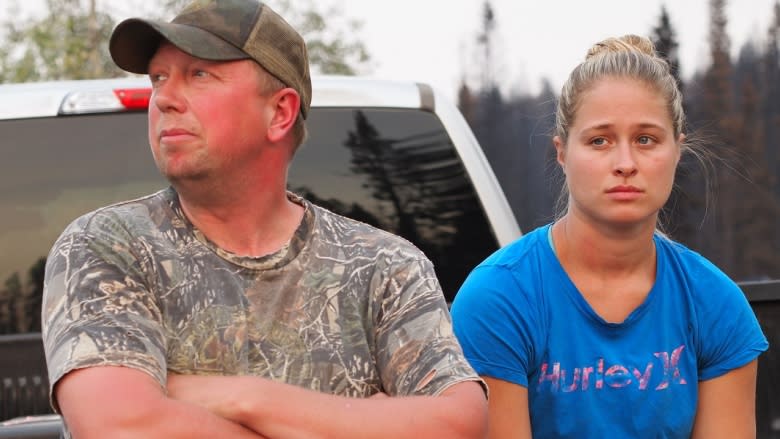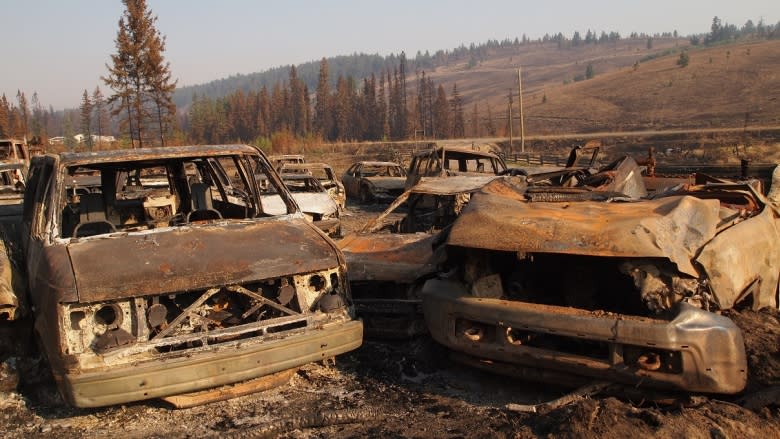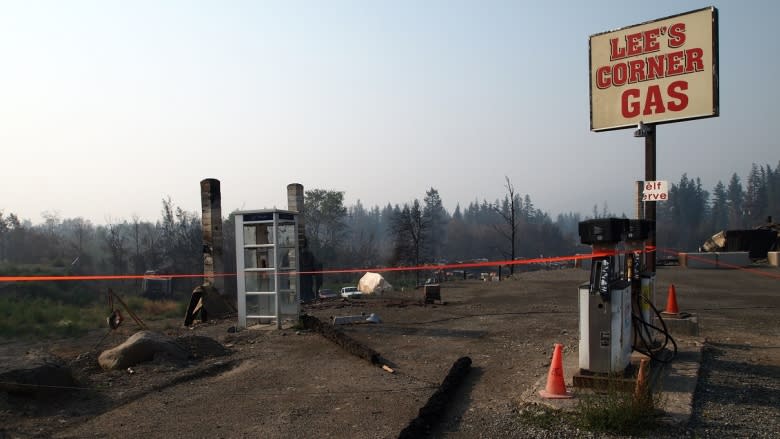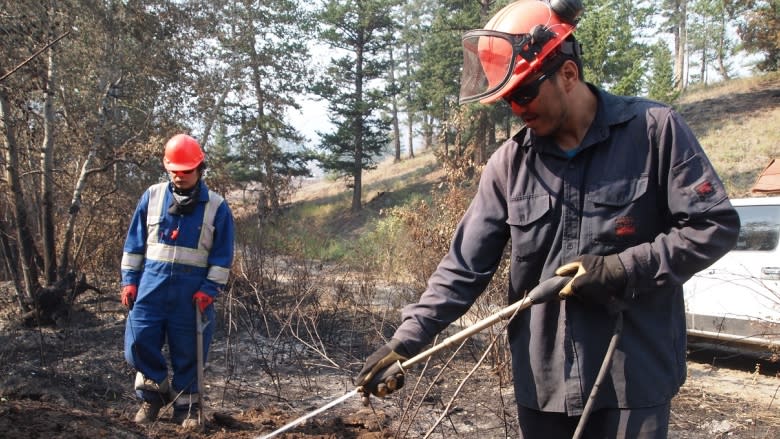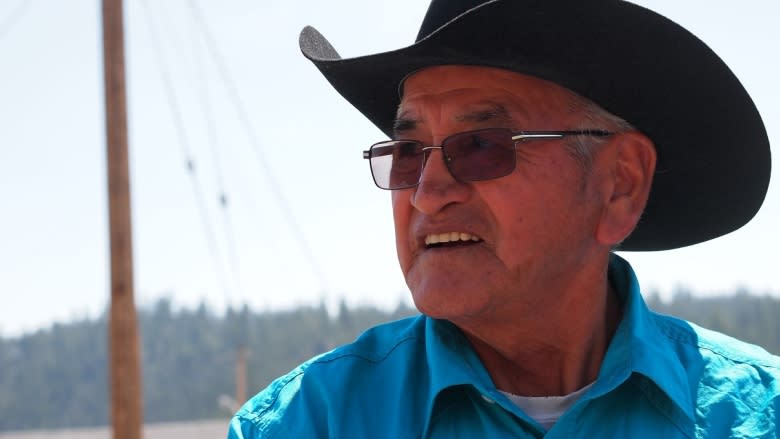When wildfires emptied the area west of Williams Lake, B.C., they stayed behind
On July 15, just a few hours before officials handed down an evacuation order for Williams Lake, B.C., Jason McDonald left his house in the city.
He wasn't fearful of the encroaching smoke or the fires burning nearby, but he was headed to his father's property in Riske Creek, about 49 km southwest. The situation there was perilous.
"We all came ripping out here to see if we could help," said McDonald.
His dad's acreage spans along Highway 20, one of the main arteries into Williams Lake. In addition to his house, there was a shop, a barn, and his business, Chilcotin Towing.
As one fire moved through the dense, dry forest, others caught hold throughout the yard.
With the help of a fire crew from Terrace, B.C., McDonald and his father set up sprinklers on the roof of his home.
The rest of the family watched from the highway.
"It was so hot," said Alena Mayer.
"Burning things were falling all over the place."
As the 35 cars parked on the towing lot burned, fuel tanks began to explode. By the time the fire crossed the property, the barn and all the vehicles were destroyed, but the house was saved.
Beyond the roadblocks
Access to the expanse west of Williams Lake is extremely restricted. But this week CBC News was granted a permit to bypass the roadblock and see first hand how the wildfires have changed the landscape.
On the Stone First Nation, known as Yunesit'in in the Tsilhqot'in language, local fire crews had just started their second 14-day rotation. Earlier this month, an evacuation order was issued for the reserve, but a collective of locals stayed behind to fight the fire.
"It was pretty chaotic," said Jordan Bobbie, a 25-year-old community member who just joined the fire crew this year.
"I didn't expect it to happen all so quick."
As the fires advanced closer to the community, the local group was joined by other firefighters, including some from the province's Wildfire Service.
At one point the flames got so intense, the Yunesit'in crew says, that most of the others withdrew to a safe zone. But they say they chose to stay on the fire line.
"We know where the green fields are," explained Ellery Brigham, a local firefighter.
"We weren't in any danger, but the smoke burned our eyes."
While a few trailers were partly damaged by the fires, no buildings on the reserve were destroyed.
Supporting the fire crews
About 110 km west of Williams Lake is Tl'etinqox, also known as the Anaham First Nation. An evacuation order was issued for the reserve on July 9, but several band members stayed behind, including a group of women who have worked long hours in a stifling kitchen preparing meals for crews and neighbours.
"We have been here since day one," said Rose Harry.
"Because of the roadblocks, you can't even get through to get groceries or whatever you need."
Food and toiletries have been donated and delivered, in some cases by military helicopter.
One such drop was made at the Tsi Del Del, or Alexis Creek First Nation. While the community isn't under an evacuation order, it has been left isolated by roadblocks while it supports evacuees from nearby reserves.
"It's been crazy," said Chief Ervin Charleyboy.
While he's grateful for the aid and donations coming in, Charleyboy said he's frustrated because he believes the band's crews, equipped with extensive local knowledge, are being underused.
"Our people have been fighting fire for years," he said.
"It doesn't matter if you are on reserve land, or a reserve firefighter. You are an experienced firefighter, you should be on the fire."
The provincial government often contracts First Nations crews, equipped with axes and hoses to put out hotspots, to help with 'mopping up' a fire after it has been contained.
About 20 members of the Tsi Del Del community are currently working on two different fires, but Chief Charleyboy believes his band members could be doing more.
In addition to the firefighters, the First Nation runs a logging company, Tsi Del Del Enterprises. It has the heavy equipment and expertise necessary to build things like fire guards.
"You should put out a fire as soon as it starts," he said. "But that is not happening."
He is planning to meet with forestry officials to see if the local crews can be better utilized. With forecasts predicting a long, hot fire season, he is anticipating that there will be more fires in the near future that his crews can fight.

